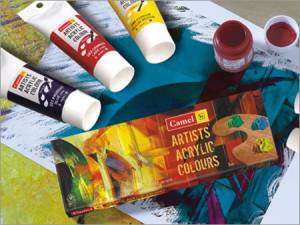 Acrylic painting is a popular and versatile medium that allows artists to create vibrant and expressive artworks. Whether you’re a beginner or an experienced artist, learning some essential tips and techniques can greatly enhance your acrylic painting skills. In this blog post, we will explore valuable tips, dos and don’ts, and practical advice to help you navigate the world of acrylic painting and unleash your creative potential.
Acrylic painting is a popular and versatile medium that allows artists to create vibrant and expressive artworks. Whether you’re a beginner or an experienced artist, learning some essential tips and techniques can greatly enhance your acrylic painting skills. In this blog post, we will explore valuable tips, dos and don’ts, and practical advice to help you navigate the world of acrylic painting and unleash your creative potential.
Prepare Your Workspace: Before you start painting, ensure that you have a clean and organized workspace. Lay out your materials, including brushes, palette, water container, and paints, in an easily accessible manner. Cover your work surface with a protective sheet or use a dedicated palette for mixing colors. Having an organized workspace allows you to focus on your art without any unnecessary distractions.
Start with a Good Foundation: Begin your acrylic painting with a solid foundation. Consider applying a layer of gesso to your canvas or painting surface to create a smooth and absorbent surface. This helps the paint adhere better and ensures the longevity of your artwork. If you’re working on a canvas, consider using a brush or roller to apply gesso evenly.
Experiment with Different Brushes: Acrylic paints work well with a variety of brushes, including synthetic and natural bristle brushes. Different brushes create different effects, so it’s worth experimenting with a range of brush sizes, shapes, and textures. Flat brushes are great for broad strokes and covering large areas, while round brushes are ideal for adding details and creating finer lines. Try various brushes to discover your favorites and how they can contribute to your artistic style.
Master the Art of Mixing Colors: Acrylic paints offer an extensive color range, but learning how to mix colors opens up endless possibilities. Invest in a basic palette of primary colors (red, blue, and yellow) along with white and black. Experiment with mixing different ratios of these colors to create a spectrum of hues and tones. Keep in mind that acrylics dry darker, so the color on your palette may not exactly match the final result on your canvas. Practice color mixing to achieve the desired shades and values in your artwork.
Layering and Building Texture: One advantage of acrylic paints is their fast-drying nature, allowing you to layer colors and build texture relatively quickly. Start with lighter colors and gradually add darker shades, creating depth and dimension in your painting. To achieve interesting textures, use a palette knife or other tools to apply thick layers of paint. Experiment with impasto techniques by adding gel mediums or modeling paste to create raised textures and add depth to your artwork.
Dos:
Experiment with different techniques and styles to find your own unique approach.
Keep your brushes and palette moist while painting to prevent the paint from drying too quickly.
Clean your brushes thoroughly after each painting session to maintain their quality and longevity.
Use a spray bottle to mist your palette or canvas to keep the paint moist if needed.
Take breaks and step back from your artwork to gain perspective and make critical assessments.
Don’ts:
Don’t overload your brush with paint; it can lead to an uneven application and excess paint on the canvas.
Avoid mixing acrylic paints with oil-based mediums or oils directly on the canvas, as it may cause adhesion issues.
Don’t neglect the importance of proper ventilation when working with acrylic paints, as some pigments and mediums can emit fumes.
Acrylic painting is an exciting and dynamic medium that offers a wide range of possibilities for artistic expression. By following these tips and embracing the dos and don’ts, you can enhance your skills, explore new techniques, and create captivating acrylic paintings. Remember, practice and experimentation are key to mastering the art of acrylic painting. So, grab your brushes !